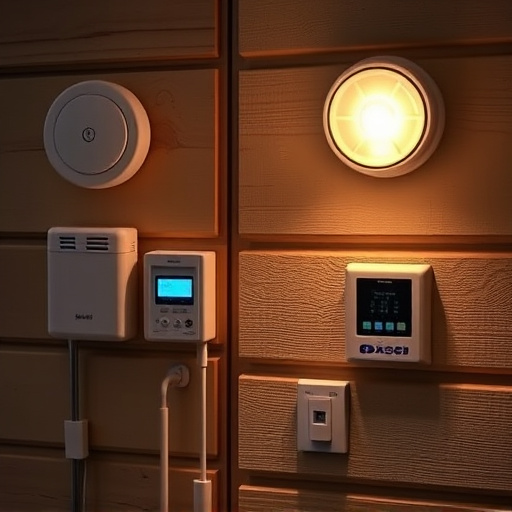DIY home alarms offer a flexible, cost-effective solution for homeowners, with wireless systems eliminating cable needs for easy installation. These systems include motion sensors, door/window contacts, and remote control via smartphone apps or local displays. Optional features like automated lighting, carbon monoxide detection, and smart home integration enhance security and convenience.
“Enhance your home’s security with the power of DIY! This comprehensive guide explores the world of wireless DIY home security systems, empowering you to take control of your safety. From understanding the basics and unravelling benefits to a step-by-step setup process, we’ll walk you through creating an effective alarm system. Discover the essential components, learn about integration, and unlock the simplicity of do-it-yourself protection. Get ready to transform your home’s security with DIY alarms.”
Understanding DIY Home Alarms: Benefits and Basics
DIY home alarms offer a secure, cost-effective solution for homeowners looking to protect their properties. One of the primary benefits is flexibility; you can customize the system according to your specific needs and preferences. These systems are wireless, eliminating the need for bulky cables, making them easy to install and ideal for retrofitting existing homes.
The basics of a DIY home alarm system involve sensors that detect motion or openings (like doors and windows), which trigger an alert. This can be connected to a central control panel, allowing you to monitor your home’s security remotely via a smartphone app or local display. Many systems also offer optional features like automated lighting controls, carbon monoxide detection, and integration with smart home devices, enhancing both convenience and safety.
Components of a Wireless Security System: What You Need to Know
Wireless security systems for your home offer a convenient and effective way to protect your space, and many modern solutions are designed with do-it-yourself (DIY) installation in mind. A typical wireless DIY home alarm system consists of several key components that work together to monitor and secure your property.
These include sensors, such as motion detectors and door/window contacts, which trigger alerts when unusual activity is detected; a central control panel that processes these signals and can send notifications or arm/disarm the system; wireless connectivity allowing remote access and monitoring via smartphone apps; and battery-powered devices ensuring continuous operation even during power outages. Understanding these components and their interactions is crucial for successfully setting up and managing an effective DIY home alarms system.
Setting Up Your Own: Step-by-Step Guide to DIY Home Alarms
Setting up your own DIY home alarms is a cost-effective and customizable way to enhance your security. Here’s a step-by-step guide to help you navigate this process:
1. Choose Your System: Select a wireless DIY kit that suits your needs, considering factors like number of sensors, motion detection type, and app connectivity. Research different brands and read reviews to ensure quality and reliability.
2. Plan Your Layout: Determine the areas you want to protect, such as doors, windows, and corridors. Identify potential entry points and strategize sensor placement for maximum coverage. A well-thought-out layout ensures comprehensive protection.
3. Install Sensors: Follow the kit’s instructions to mount sensors at strategic locations. This may involve attaching door/window contacts, motion detectors, or glass break sensors. Ensure proper alignment for accurate triggering.
4. Connect Devices: Link your sensors to the main control panel using provided wiring or wireless connections. Some systems use Wi-Fi or Bluetooth, while others rely on radio frequency (RF) signals. Test each connection for reliability.
5. Configure Settings: Customize settings like sensitivity levels, notification preferences, and delay times through a user-friendly app. Set up automatic arming when leaving home and receive alerts on your smartphone if any sensors are triggered.
6. Test Your System: Before relying on it fully, conduct thorough testing. Simulate various scenarios, like opening a door or triggering a motion sensor, to ensure the system responds as expected. Adjust settings as needed for optimal performance.
